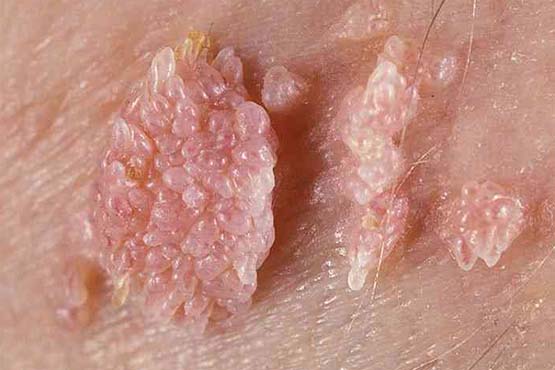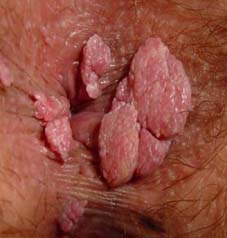Wart ( Condyloma )

Dry blisters that occur on the skin or mucous membrane of the genital area due to the HPV virus are called genital warts. The medical terminology of genital warts is condyloma. Genital warts are a common disease in the society, mostly transmitted sexually and rarely non-sexually. There are 40 different types of HPV virus that cause genital warts. Genital warts infect 6 million people annually in the United States and continue to be a serious public health problem.
Genital Wart
Genital warts usually appear 3-4 months after the HPV virus enters the body. The incubation period of the HPV virus ranges from 2 weeks to 2 years. After the HPV virus has passed the incubation period, the first symptom is warts that occur around the vagina in women, and around the penis in men.
Since HPV is transmitted from traumatized skin, genital warts tend to be found in areas that are more exposed to friction, especially during intercourse. This region is the area between the vagina entrance and the breech in women, the glans penis, foreskin and penis root in men.
Genital warts can also appear on mucosal surfaces (such as the vagina and its surroundings, inside the penile urinary tract) as glove-like warts of similar color to the surrounding tissue. In some cases, warts may develop slowly as ulcerative and cauliflower-like lesions and spread to the surrounding tissue.
Genital warts are usually painless, itchy, and bleed if plucked or cut with a razor blade. It may tend to multiply and sometimes stay the same size for years. Another clinical image of HPV in the genital area is papillomas. They can be white or red, with an effect on the color pigments in the area. These slow-growing lesions are usually dark in color and can sometimes be stalked.
The course of genital warts varies depending on the immune response of the person and the type of virus. High-risk HPV types may cause flat genital warts, or HPV infection may develop without genital warts. Here, the HPV virus can stay hidden by settling in the cervical cells, and may cause cervical cancer (cervical cancer) over many years.
Genital warts can sometimes be confused with molluscum contagiosum. With the HPV DNA test to be taken, it can be easily determined whether the lesion is a genital wart or not.
After the diagnosis of genital warts is made, the treatment phase should be started without wasting any time. There are many methods of genital wart treatment. The common feature of the methods is to destroy the sigil. Adequate destruction of the wart as well as the basement membrane should be our first priority. While doing the damage, it should be healed without leaving any scar on the skin and should not cause much pain to the patient. The treatment option that meets all these conditions is laser. Genital wart treatment with fractional carbon dioxide laser is the most effective treatment option with proven effectiveness and low probability of pain, recurrence and scarring.
In our HPV Treatment Center located in Silivri, HPV treatment with laser and genital wart burning operations are performed.
You can call our call center at
+355 69 456 4467 for detailed information about laser genital wart burning and to make an appointment.
This article may also interest you

Small cracks and irritations in the anus during anal intercourse create a suitable environment for the transmission of the virus.
Read more

 TR
TR SQ
SQ